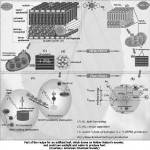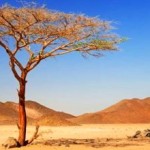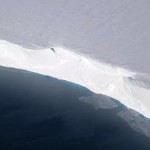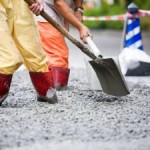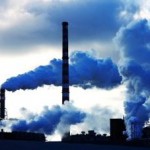
Washington – Close to one-third of the wealth of low-income countries comes from their “natural capital” which includes forests, protected areas, agricultural lands, energy and minerals, according to a new World Bank book launched on January 20. Countries that manage these natural assets carefully are able to move up the development ladder – investing more and more in manufactured capital, infrastructure and “intangible capital” like human skills and education, strong institutions, innovations and new technologies.
In 2005, the total economic value of natural assets was $ 44 trillion worldwide, or $ 7,000 per person on average while “intangible” capital accounted for the greatest component of total wealth – worth a massive $ 540 trillion worldwide in 2005.
“The Changing Wealth of Nations” – a follow-up publication to the 2006 book, “Where is the Wealth of Nations?” – extends the principles of wealth accounting to include dimensions that go beyond the standard Gross Domestic Product calculations undertaken by finance ministries. It presents, for the first time, a set of “wealth accounts” for over 150 countries for 1995, 2000, and 2005 which allows a longer-term assessment of global, regional and country performance in building wealth.
“How we measure development will determine how we do development,” said Inger Andersen, Vice President, Sustainable Development Network, World Bank. “That’s why we need comprehensive wealth accounting that gives a more complete picture of economic progress for the long run.”
The book shows that developing countries differ sharply from developed countries in where their wealth is based. Most countries, it says, start out with a relatively high dependence on natural capital and those that progress most successfully manage their assets for the long term and reinvest in human and social capital as well as in building strong institutions and systems of governance.
“What we found was a strong link between careful management of a country’s natural capital with increasing levels of wealth and economic well-being,” said co-author Glenn-Marie Lange from the World Bank’s Environment Department. “In low-income countries, where natural capital averages 30% of total wealth and over 50% in some countries, development is about leveraging natural capital for growth.”
Botswana – which has been a leader in Africa for transparency and carefully managing its natural resource base – increased its per capita wealth by 35 per cent between 1995 and 2005. Since the 1980s, the Government has had a Sustainable Budget Index in place to monitor how well income from mining is reinvested in the national budget.
And, through a long-established environmental accounting program, it has shown that a large share of the rents from mining is being recovered and invested in Botswana’s long-term development.


The book finds that intangible capital growth contributed close to 100% of the increase in total wealth in Sub-Saharan Africa and Eastern Europe and Central Asia from 1995 to 2005. This share was 80% in South Asia and 72% in Latin America and Caribbean.
“It is the quality of institutions that enhances a country’s capacity to provide economic benefits,” said co-author Kirk Hamilton from the World Bank’s Development Economics Group. “When a country has strong institutions that reaffirm the rule of law, ensure government accountability and help control corruption, investment follows and grows.”
The quality of institutions is especially important for the good stewardship of natural capital, the book concludes.
Late last year, World Bank President Robert B. Zoellick launched a new initiative called the Global Partnership for Ecosystems Valuation and Wealth Accounting. It brings together a group of developed and developing countries to test out and implement expanded measures of natural wealth and including these in countries’ national accounts. The goal, among other things, is to properly value ecosystem services like coastal protection from mangroves and hydrological services from forests.
Click here to access the book, “The Changing Wealth of Nations: Measuring Sustainable Development in the New Millennium”.
Source: The World Bank.

